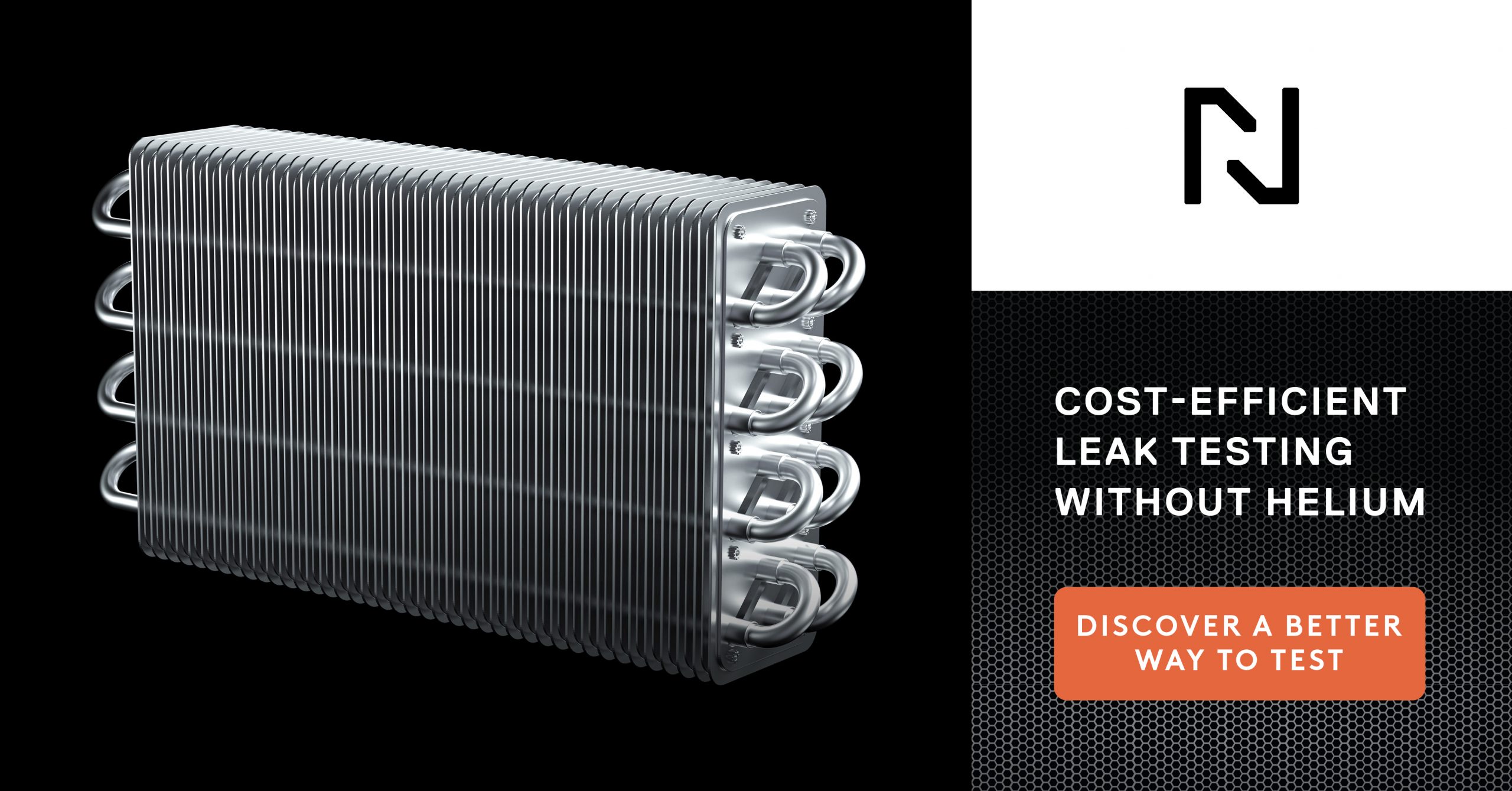Helium leak testing of aluminum evaporators is an essential part of the manufacturing process for heat transfer components used in commercial and residential HVAC applications. When a North American manufacturer sought alternatives to deal with the global helium shortage and ballooning prices, the N2H2 gas mixing system from UPC-Marathon, a Nitrex company, was the right solution.
“Unlike most of our customers who require gas mixing systems for heat-treating applications like carburizing and vacuum furnaces, some manufacturers use this equipment to support non-destructive, quality control testing. The mixing system supplies N2H2 gas to the company’s QC test station, which pressurizes the aluminum evaporators with forming gas to detect leaks in the coils that are not supposed to be there, making the final product safer and more reliable to use,” says Pat Torok, General Manager of UPC-Marathon, a Nitrex company, in the USA.
The mixing system enables affordable production of high-purity forming gas mixtures, precisely mixed to the company’s unique process requirements – a blend of 5% hydrogen and 95% nitrogen. Producing forming gas onsite in the facility is far more cost-effective than buying expensive pre-mixed cylinders; besides the cost savings from reduced gas purchases, this practical solution also decreases the need for cylinder change-outs and intermittent downtime.
The complete system includes a control panel for monitoring hydrogen (H2) and oxygen (O2) and supplies forming gas at a maximum capacity of 425 CFH. It is configured to provide metered gas for sustainable, zero-waste production. An H2Smart™ analyzer continuously samples the hydrogen concentration going to the QC leak test station to ensure high accuracy and repeatability of the composition of the resulting mixture. The mixing system is built with reliability and flexibility in mind. A reserve tank fitted in the flow cabinet located downstream from the mixing system provides a secondary source of gas to support increased production, ensuring a constant flow without operational interruptions or bottlenecks.
While handling hydrogen does face design challenges, the turnkey system including gas supply cylinders were installed outside of the facility in a free-standing, outdoor-rated enclosure with climate controllers for safe storage and use. The new gas mixing system was put into service in early December 2022, and the customer keeps it running three shifts per day, six days a week.


